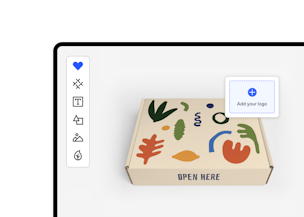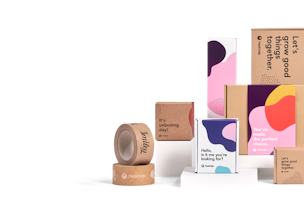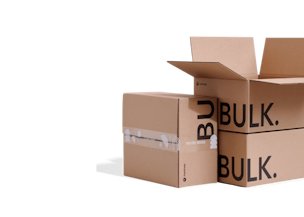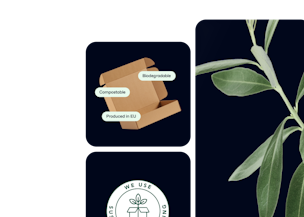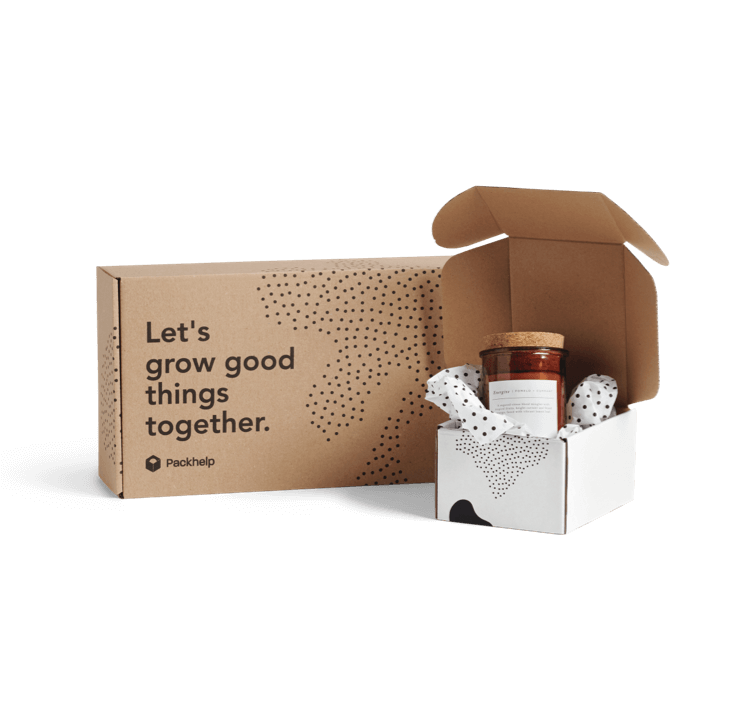Packaging Design for Marketplaces: Optimising Efficiency & Lowering Costs

Subscribe to stay updated
You're now subscribed!
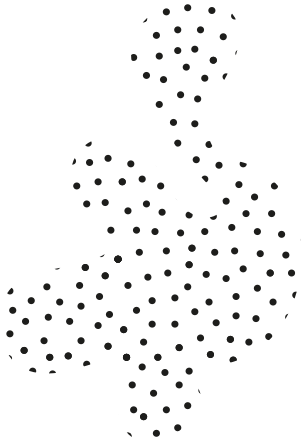
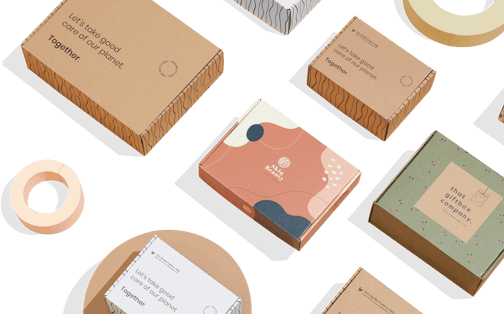
In any type of business, there’s always room for improvement.
Especially in the dynamic world of e-commerce, where you can easily lose balance between efficiency and cost control. And packaging is a huge part of that equation.
The wrong type of packaging can cost your marketplace lost warehousing and shipping space, lost revenue, or even lost customers.
Solution: take a closer look at your packaging design. It’s an area where even the slightest optimisation can improve your packaging’s protective qualities and save you money in the process.
In this article, you’ll learn the answers to the following questions:
- Why is packaging efficiency important for marketplaces?
- Which elements of packaging design are worth optimising across all sellers?
- How can you reconcile efficiency, cost, and sustainability?
Efficient packaging: features and benefits
What is efficient packaging?
It’s easier to explain with examples, so let’s paint a picture.
1. Efficient packaging protects your product.
Have you ever had the dubious pleasure of receiving an oversized package with your ordered product in smithereens, flopping around inside? Or maybe you bought aromatic coffee but received a swollen bag of beans without any scent whatsoever?
Packaging’s role is to create a protective barrier for a product, preserving its integrity and intended features.

2. Efficient packaging is convenient.
A plastic pouch with the so-called “easy-open” feature that rips midway through. A paper bag that tears apart when you hold it because it has no handle. Any of these ring a bell?
In contrast, efficient packaging boasts a thought-through design, where every feature serves as a quality enhancer for your product.

3. Efficient packaging is sustainable.
Redundant layers of cardboard, unrecyclable bits, toxic material, oversized boxes with almost nothing but air inside - these are some of nature’s worst packaging nightmares.

You don’t want that. Why?
Sustainability promotes trust. If packaging from your marketplace causes harm to the environment, it causes trouble for customers who are getting more and more eco-oriented every year.
According to the 2023 Buying Green Report, 82% of consumers would be willing to pay more for sustainable packaging.
So, how does efficient packaging help?
With smart solutions and a thoughtful design, your packaging efficiency can skyrocket in a matter of weeks. Why should you invest in it?
Thanks to efficient packaging, your marketplace will generate:
-
Less product waste.
During storage, products need just the right conditions or they will go bad or become unusable faster than expected.
It’s not just the temperature, humidity and sun exposure in your warehouse - the products need sturdy external packaging that will secure them during the long months they might spend there.

Efficient packaging minimises the strain they will have to endure.
-
Less packaging waste.
As you’re aware, less plastic, bubble wrap or foam means a smaller environmental footprint. And without redundant materials, there is less waste that must undergo processing and recycling.
You can also consider minimising the number of offcuts, achieved by optimising packaging created from one sheet.
When it comes to packaging materials, paper and cardboard are always a better choice than plastic.
According to the US Environmental Protection Agency’s data, while paper and cardboard constitute about a quarter of municipal waste, they account for 2/3 of recycled materials. Conversely, plastic makes up 12% of generated waste and only 4% of the total recycled tonnage.
The difference is striking.
-
Lower costs.
It all comes down to right-sizing and customisation.
For example, by replacing packaging filler with tailor-made inserts, a significant part of packaging expenses goes down. By utilising smart package design, material usage decreases. This, in turn, means less money spent on shipping.
Another way to cut costs is to choose recycled materials like RPET or lightweight materials like low-grammage cardboard. More on that later.
One of Packhelp’s clients was able to decrease packaging costs by reducing the number of cardboard layers and using material with lower grammage. Read more in our case study.
-
Less workload for the packing team.
Your warehouse staff packs thousands of products for shipping daily. Mistakes happen - and if they do and the product arrives damaged, your customers will blame your platform.
How to prevent that from happening?
Well-designed packaging is easier and faster to assemble, improving your staff’s efficiency and leading to fewer errors in assembly. This further minimises waste and associated costs. Not to mention employee satisfaction.

That’s all great, but how can you improve your packaging design?
Efficient packaging design: tips for optimisation
The 3 main elements you should consider when looking for efficient packaging are materials, shape & size, and weight.
1. Packaging materials
There’s a world of resources that will help you achieve supreme efficiency. But how to classify them?
You can divide materials into lightweight & heavy, clear and non-transparent, and cheap and expensive, but all that is very basic knowledge that needs little to no research. These categories are also easy to assess through trying out samples of a particular material.
Packhelp's Sample PacksEco properties are a less obvious and, arguably, more useful way to find out which packaging material will be best for your product.
Recyclable & reusable materials
You’ve heard of the most popular recyclable materials - kraft paper and heavy-duty cardboard. But obviously, you can also recycle plastic.
PET (polyethylene terephthalate) is your tried and trusted, durable, waterproof plastic that is not only 100% recyclable but also reusable.
And that’s a great benefit - packaging made from PET can be repurposed by customers or just thrown into the recycling bin to become RPET - recycled plastic. Its features after recycling stay almost unchanged.
But remember - traditional plastic is toxic and terrible for the environment when disposed of the wrong way.
Biodegradable & compostable materials
Does biodegradability mean that the material has to be plastic-free? That’s a common misconception.
Cardboard and paper are simultaneously plastic-free and biodegradable. However, a material group called bio-based plastics (bioplastics) belongs only to the latter category.

One of them is PLA (polylactic acid), a polyester derived from fermented plant pulp, usually corn. 100% biodegradable and even compostable in the right conditions.
Note: not every biodegradable material is compostable, but every compostable material is biodegradable.
PLA is perfect as a substitute for traditional plastic, especially when it comes to waterproofing or greaseproofing cardboard and paper. A kraft mailer covered in a PLA barrier stays biodegradable, while paper covered in PE (polyethylene) becomes non-biodegradable and even non-recyclable.
Some of the more modern packaging materials are grease- and waterproof sugarcane (bagasse), bamboo, coconut shell, or even mushroom mycelium. Each of them is 100% biodegradable and compostable.

All the aforementioned eco properties are a must-have for sustainable marketplaces. Easy to find in Packhelp’s offer.
Unsustainable materials
If that was it when it comes to categorising packaging materials, the world would be a more beautiful place.
Unfortunately, due to financial constraints, marketplaces often settle on using unsustainable packaging materials - which are what, exactly?
Unsustainable packaging is every type of packaging that you cannot recycle, biodegrade or compost, like Styrofoam, expanded polystyrene, cling film, and inseparable combinations of materials, such as PE-coated paper.

A different approach states that unsustainable packaging materials come from non-renewable resources like fossil fuels. PET is one of them, which is why RPET is always a better choice.
All in all, when balancing your packaging costs and efficiency, try to evaluate - is hurting the planet (and your platforms’s credibility) worth spending less on materials?
2. Packaging shape & size
Boosting your packaging efficiency through shape optimisation is worth considering next. A more streamlined shape often aids in cost reduction.

Make sure you choose a box or bag size that’s not a waste of space but wraps around the product perfectly.
For example, a non-standard idea that’s great for very specific products is a tube.
It’s round, so it’s more efficient and economical for bottles and posters than a rectangle box with unnecessary corners that waste packaging material. Made from cardboard and sealed with a metal lid, the tube also efficiently protects your shipment from damage.
And what if your product is sturdy in and of itself and does not require a tough exterior to shield it? Products like books, tools, decorative stones or boards will be just fine wrapped in durable paper - the ultimate shape-shifter.
Paper is also very lightweight.
3. Packaging weight
There’s more than one reason to decrease the weight and dimensions of your packaging: easier handling, streamlined storage, more safety for your product during a fall, and, last but not least, shipping prices.
Both the actual weight and the DIM (dimensional) weight matter, as the bigger of the two is used to calculate the courier cost.
If a product weighs little but is shipped in a large box, the carrier company will charge you more, since the parcel occupies more of its precious cargo space.
At Packhelp, we provide our clients with shipment solutions optimised for particular carrier norms.
While the use of materials which don’t require fillers reduces costs by itself, lightweight packaging materials can further help bring down shipping prices. Often, besides reduced physical weight, they’re also more flexible, which proves useful in limiting the DIM weight.
Some unobvious lightweight materials to consider:
Tissue paper

A popular lightweight material, tissue paper is a silky-feel wrapping that adds an exquisite touch to products from the luxury industry, as well as for jewellery, timepieces, or kitchenware.
It’s not only a wrapper, but also a light and airy packaging filler.
The best-quality tissue paper is biodegradable, compostable, and plastic-free – which is an important factor for an increasingly large segment of customers.
Fabric

An oldie but goldie, probably as old as weaving itself.
Fabrics are extremely versatile and easily customisable, making them an excellent choice for ethically sourced and sustainable packaging that will also charm the customer.
But make sure to stay away from toxic and unsustainable fabrics like acrylic, nylon or rayon. Choose organic cotton, hemp and linen instead.
Among textile packaging, perhaps the most universal choice are muslin bags, loved by all sellers – lightweight, easily foldable, and reusable, they’re perfect for small jewellery, soaps, and other handmade items.
Ways to reconcile efficiency, cost, and sustainability
Successful packaging is one that’s functional, convenient, sustainable and doesn’t cost too much.
Hopefully, this article has helped you move towards each of these goals. But how can you achieve them all at once? Technology & information. Through utilising state-of-the-art solutions and gaining inspiration from the industry, you can craft masterful packaging.
Packaging innovations
Although not yet widely used, several innovations in the packaging industry are worth keeping a close eye on, due to either their sustainability, efficiency, or both.
They’re usually connected with scientific discoveries, technological breakthroughs, or new ways to utilise existing materials. Among the most interesting examples are:
- Water-soluble packaging that dissolves in hot water.
- Waste-derived packaging, for example from nanocellulose. Potentially, its changing colour can even signal to the customer whether packed food is still good to eat.

- Edible packaging. Why dispose of plastic tableware after a single use when there are edible plates and bowls available, doubling as an additional snack?
- Self-heating and self-cooling packaging. Independent of any external energy sources, such packaging can be very useful for military or disaster-relief purposes.
Bear in mind, however, that regulations regarding recycled resources differ widely between regions. For example, some EU countries have very limited options for compostable packaging reprocessing.
Inspirations from your competition
The biggest e-commerce marketplaces in the world have been steadily entering the world of efficient and sustainable packaging optimisation. If you want to keep pace with them, observe your environment.
For example, read case studies.
Whether it’s due to cost savings, reduced workload, or green initiatives, many businesses have switched to smaller, lighter, and repurposable packaging solutions. Some of the satisfied brands which have embraced this shift include:
- Biotika. Thanks to changing its supplier, this Poland-based manufacturer of scented candles and other home fragrances was able to increase its marketing budget by 10%.

- Xlash España. With the help of a new supplier, the Spanish branch of a well-known beauty manufacturer designed new branded boxes, which additionally came at a very attractive price.

- Raylo, a mobile phone leasing company, decided to partner with a sustainable packaging manufacturer due to their shared environmentally conscious values. And not only that – they cut the overall packaging manufacturing cost by 11%, with more than a one-fifth decrease in the packaging weight.

What will your packaging look like tomorrow?
That’s up to you. Every strategy is different and the e-commerce landscape is changing.
What you can do right now is ask yourself the following questions and start looking for answers:
- Which of my existing packaging am I most proud of?
- What makes it efficient?
- How can I improve the packaging that I’m not proud of?
- How much will it cost me to improve it and how much can I gain from it?
- How many % of my existing packaging is eco-friendly (recyclable, reusable, biodegradable or compostable)?
If you need help finding answers, our packaging experts are here to do most of the work for you. Learn more here.
